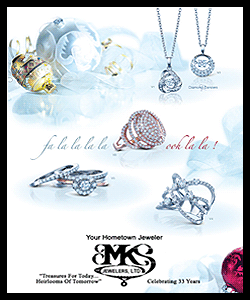|
 “As people engage in a variety of tasks and activities, often
times basic fire safety takes a second place in the list of
priorities,” said Larry Matkaitis, State Fire Marshal. “Residents
should be proactive in discarding old decorations, extension cords,
and remember to water natural Christmas trees frequently”. “As people engage in a variety of tasks and activities, often
times basic fire safety takes a second place in the list of
priorities,” said Larry Matkaitis, State Fire Marshal. “Residents
should be proactive in discarding old decorations, extension cords,
and remember to water natural Christmas trees frequently”.
Last year in Illinois 91 home fires reported were caused by
Christmas trees and other decorations. Those fires resulted in more
than $1.7 million in property losses. According to the National
Fire Protection Association (NFPA), between 2007 and 2011, fire
departments in U.S. estimated that two out of five fires were linked
to Christmas trees, holiday lights and other decorations, between
December and January. On average the origin of 230 home fires were
Christmas trees. Those fires resulted in the death of 9 civilians,
22 injuries, and close to $18.3 million in direct property damages.
 The OSFM offers the following tips to residents:
Christmas trees
- When using an artificial tree, be sure it is labeled,
certified or identified by the manufacturer as UL listed. Make
sure artificial trees are tested and labeled as fire resistant.
- When using a fresh tree, make sure the green needles don’t
fall off when touched. This could mean that the tree is brittle
and dry, therefore making it hazardous.
- Before placing the tree in the stand, cut 1-2” from the base
of the trunk. Add water to the tree stand, and be sure to water
it daily. Put your tree in a sturdy water stand.
- Make sure the tree is not blocking an exit and is at least
three feet away from any heat sources such as fireplaces,
radiators, candles, heat vents or space heaters.
- Always turn off Christmas tree lights before leaving the
room or going to bed.
- After Christmas, get rid of the tree. Dried-out trees are a
fire hazard and should not be left in the home or garage, or
placed outside the home.
Holiday lights
- Use lights that have the label of an independent testing
laboratory, and make sure you know whether they are designed
for indoor or outdoor use. Only use “indoor” lights indoors,
and “outdoor” lights only outdoors.
- Replace any string of lights with worn or broken cords,
or loose bulb connections.
[to top of second column] |

- Use no more than three light sets on any extension cord.
Extension cords should be placed against the wall to avoid
tripping hazards. Avoid running cords under rugs, around
furniture legs or across doorways. Do not overload extension
cords, outlets or power tips.
- Never use lit candles to decorate the tree. Read the
manufacturer’s instructions for the number of LED strands that
are safe to connect.
- Bring outdoor electrical lights inside after the holidays to
prevent hazards and make them last longer.
- Keep a fire extinguisher close by.
Candles December is the
peak month for home candle fires, with Christmas Eve and
Christmas Day representing two of the top five days for
associated fires. More than half of all candle fires start when
they are placed too close to combustible household items (i.e.
curtains, lamp shades, other fabrics, and plastic) and holiday
decorations (i.e., trees, garland, stockings, wrapping paper,
and wrapped/boxed gifts).
- Consider fusing flameless candles, which look and smell
like real candles. If you do use traditional candles, keep
them at least 12” away from anything that can burn, and
remember to blow them out when you leave the room or go to
bed.
- Use candle holders that are sturdy, won’t tip over and
are placed in uncluttered surfaces.

- Avoid using candles in the bedroom, where two of five
U.S. candle fires begin, or other areas where people may
fall asleep.
- Never leave a child alone in a room with a burning
candle.
- Always put candles out before leaving the room.
- Never use lighted candles near trees, boughs, curtains
or drapes, or with any potentially flammable item.
For more information about fire safety and prevention,
please visit http://www.sfm.illinois.gov or www.nfpa.org.
[Office of the Illinois State Fire
Marshal] |